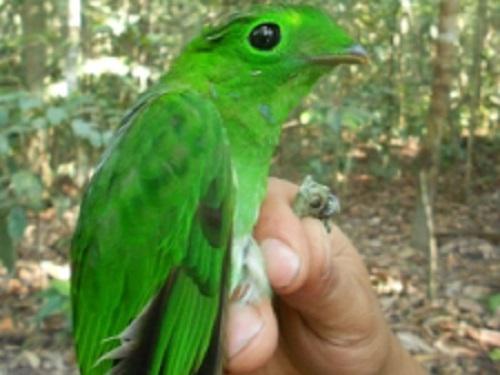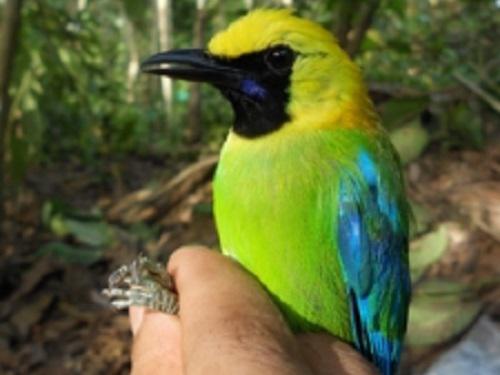Marthy William
The aim of this project is to assess bird seed dispersal service in assisting regeneration of the secondary lowland forest in Sumatra, Indonesia.

Green Broadbill Calyptomena viridis, one of very important medium size seed dispersers.
Indonesia holds one of the largest areas of tropical forest (138 million ha or 10 of the world’s remaining tropical forests). However, approximately 60 million ha of Indonesia’s forests are classified as production forest, and where due to inappropriate forest harvesting procedures many of these forest have been degraded and/or fragmented. Birds (and mammals) play an important role in forest regeneration and maintaining plant diversity. However, in the secondary forest habitat where there are potentially limited number of bird seed dispersers and also decreasing visitation rate of frugivores, how much of the seed dispersal service is still operating?

Blue-winged Leafbird Chloropsis cochincinensis, one example of medium size bird from nectarivorousinsectivorousfrugivorous feeding guild.
This research is aiming to assess bird seed dispersal service in assisting regeneration of the secondary dry lowland forest in the Sundaland Biodiversity hotspot, Sumatra, Indonesia. Understanding the current seed dispersal system that is still operating in the secondary forest area will greatly help in deciding what type of anthropogenic intervention that is required in restoring the secondary forest. Bird and vegetation point transects, seed traps and planting quadrates will be used to examine factors that influence the visitation rate of frugivore birds and to measure the seed rain and germination success at each gradient of secondary forest type as a quantitative measure of forest regeneration potential. It is aimed that this study will also contribute to the newly developed ecosystem restoration policy in production forest in Indonesia and supporting the conservation of Sumatra lowland forest biodiversity.